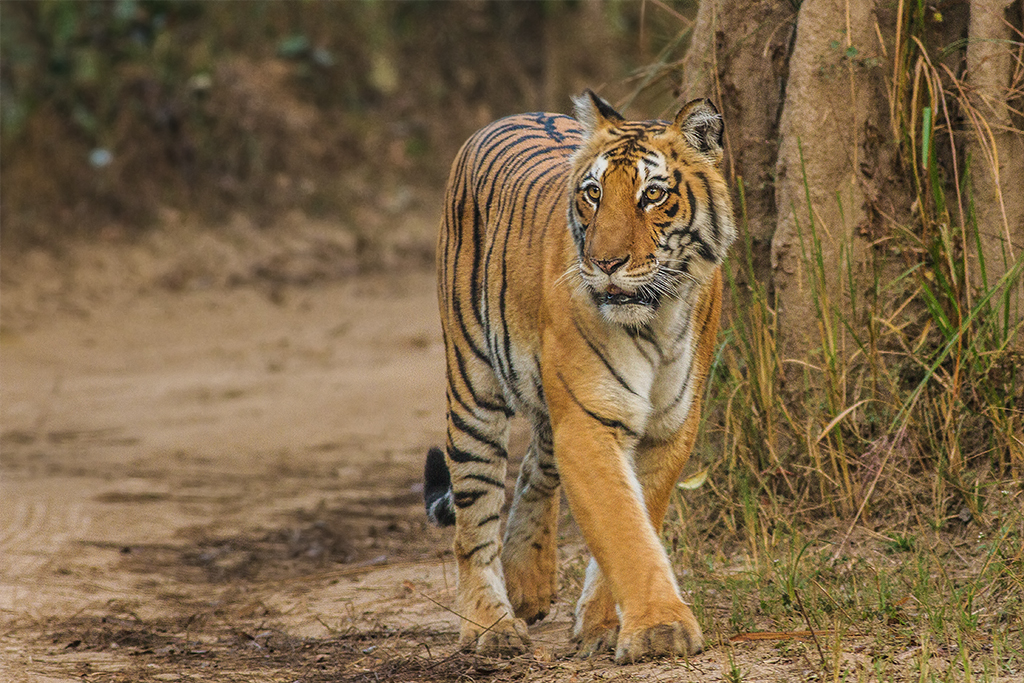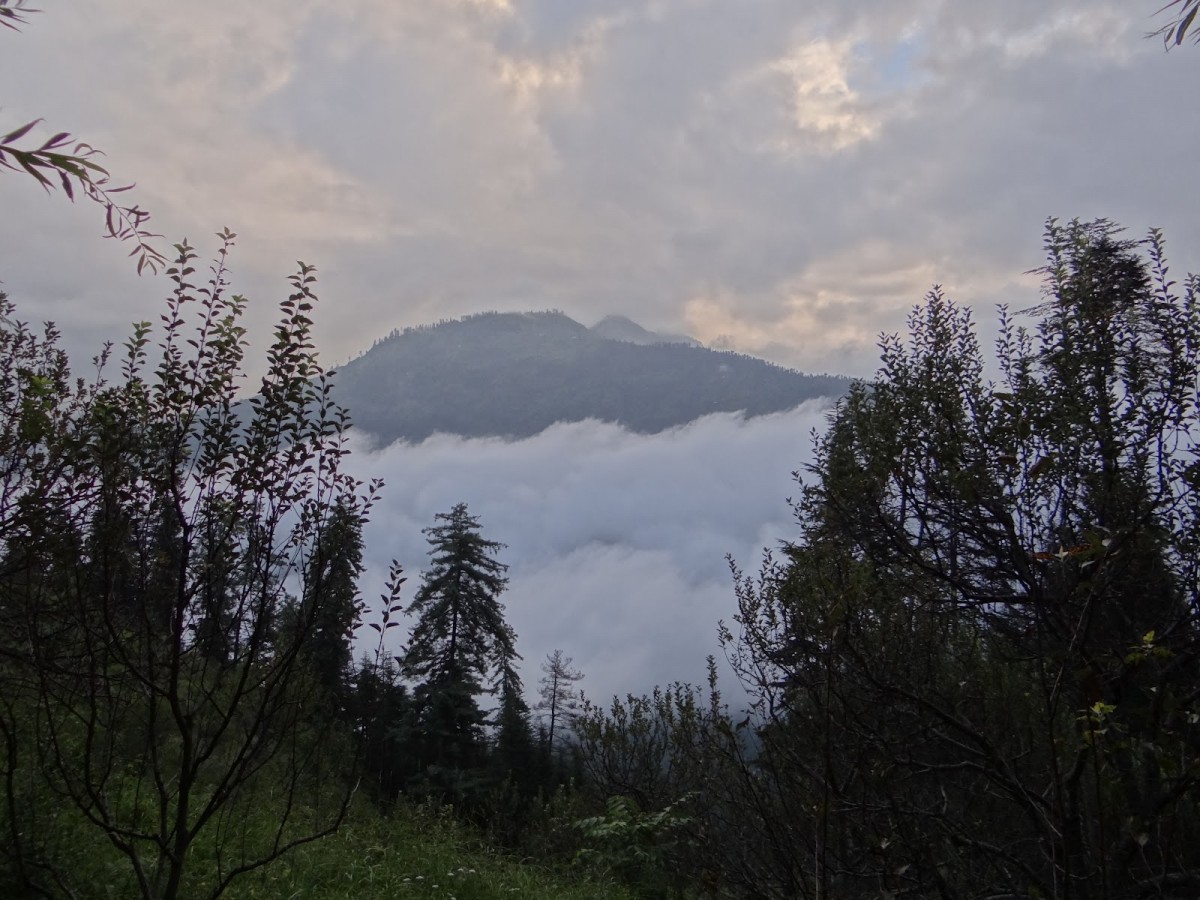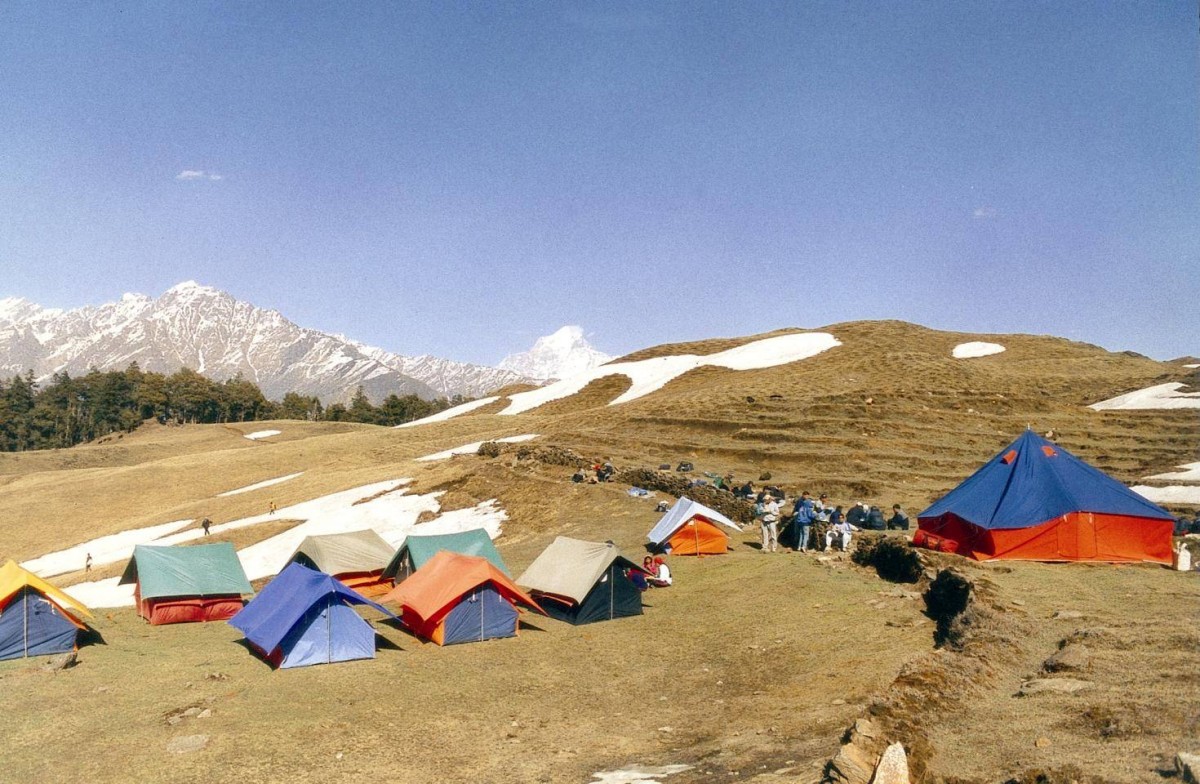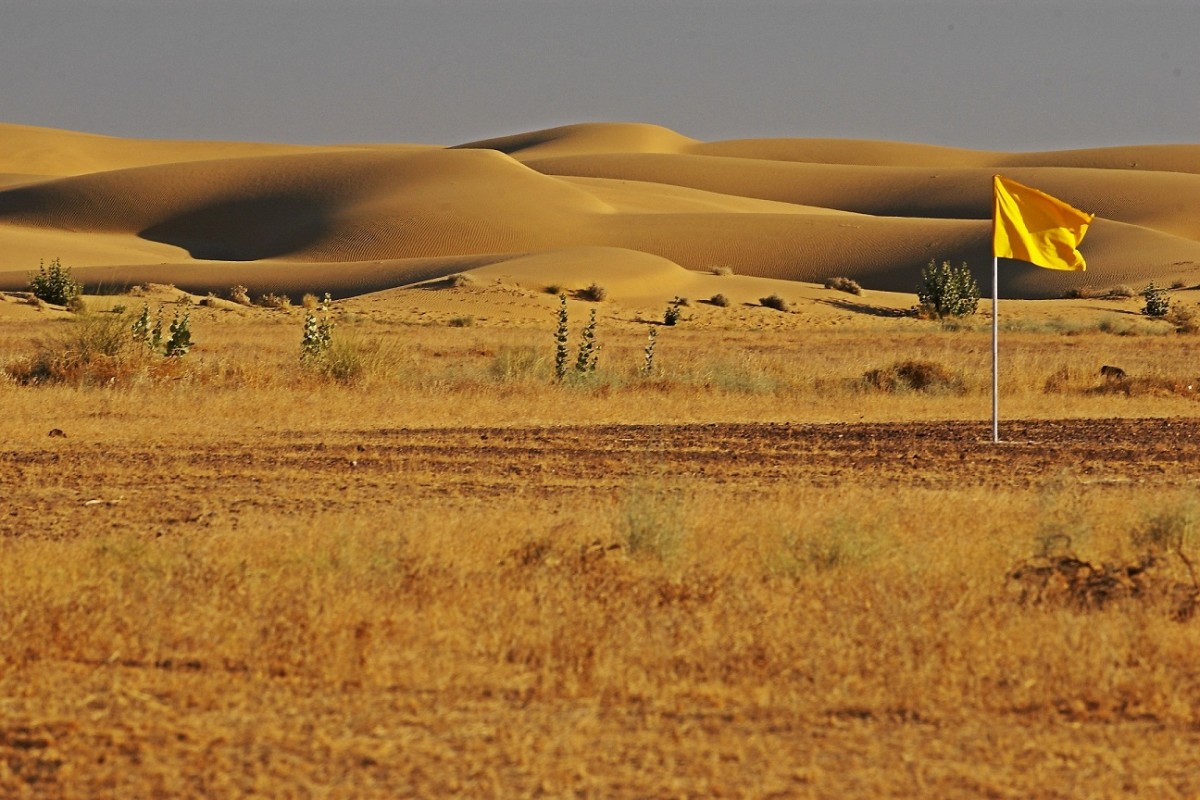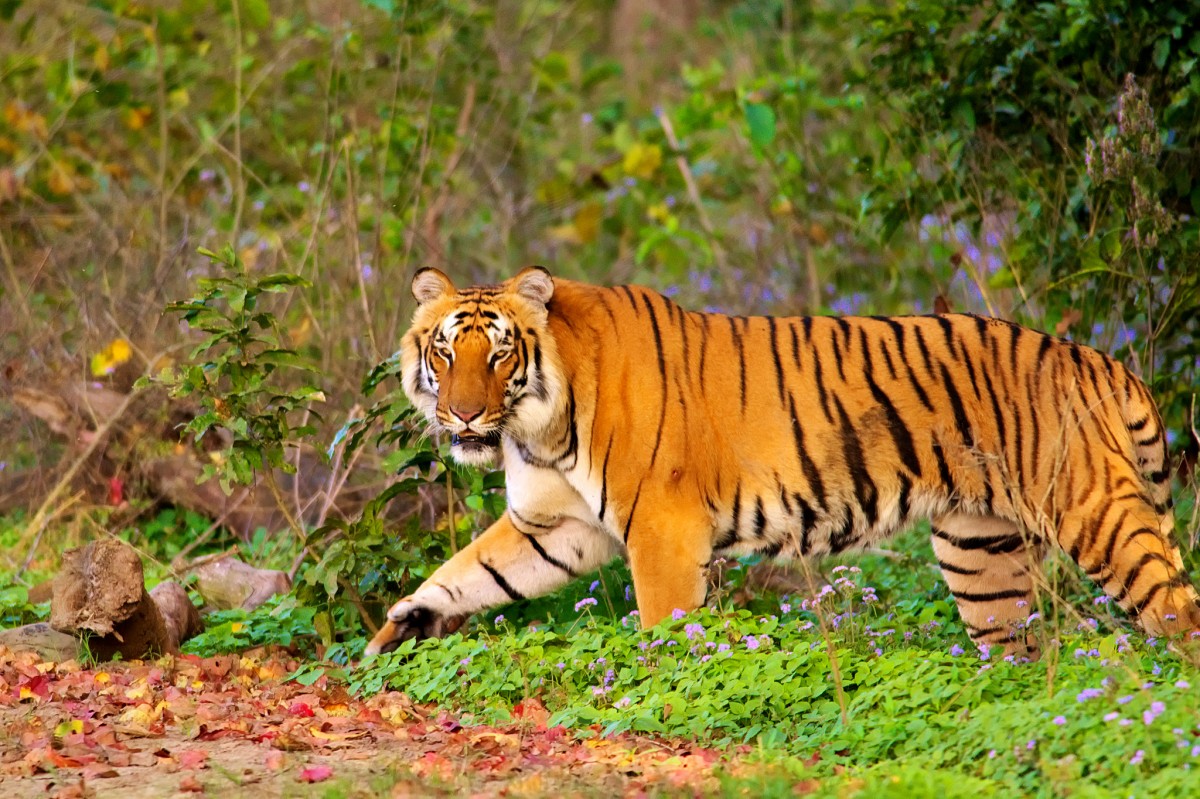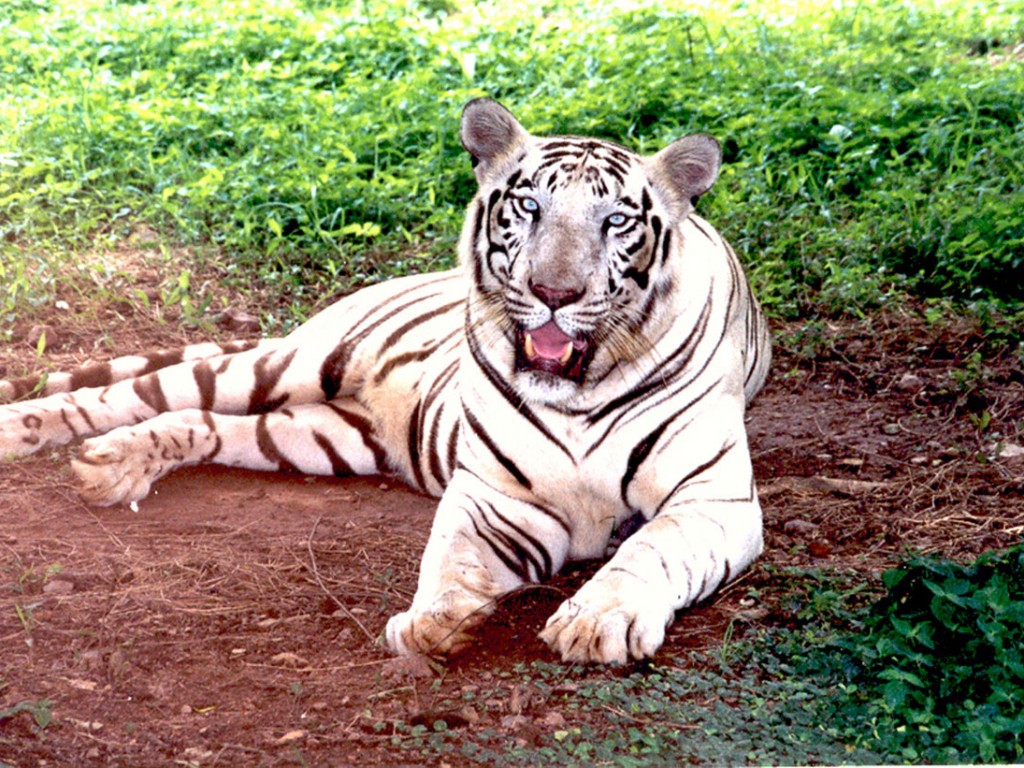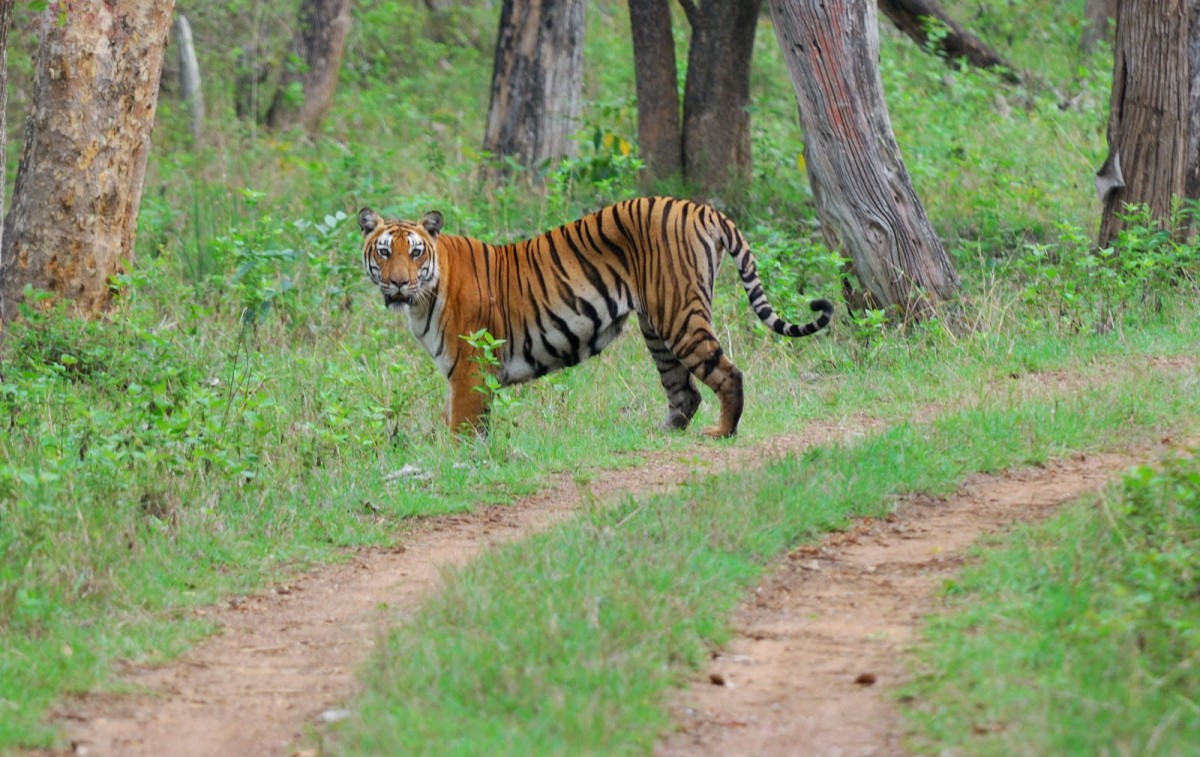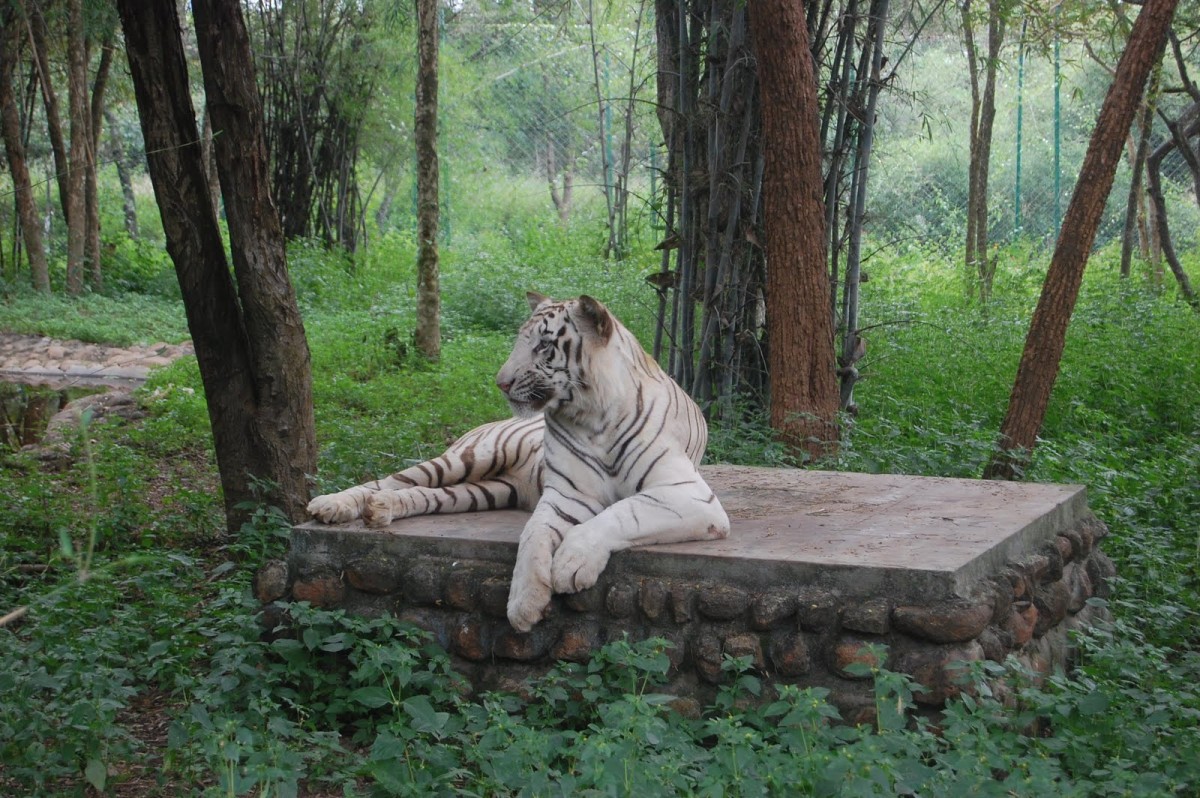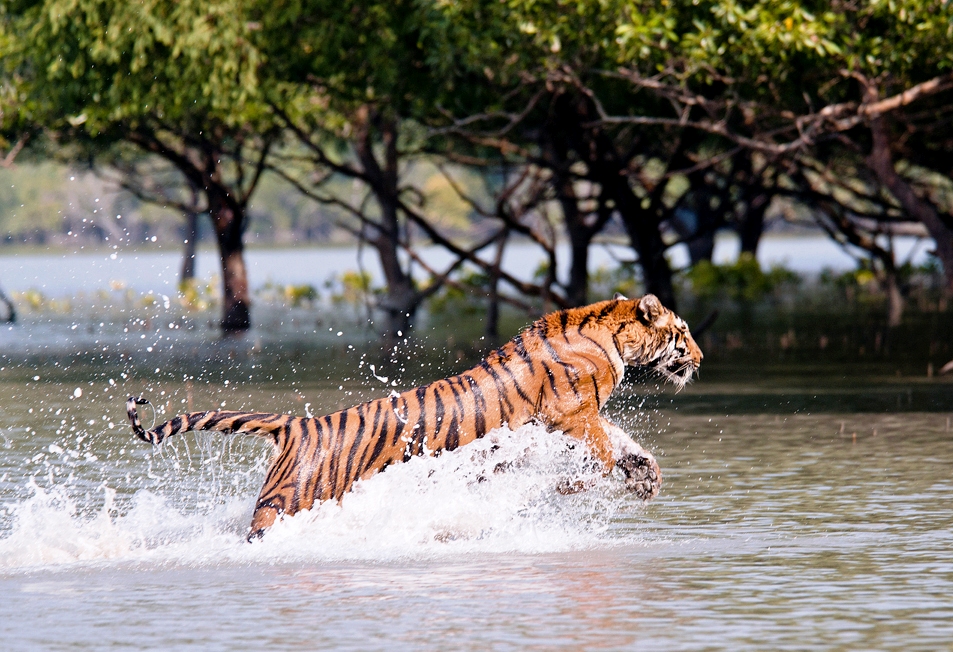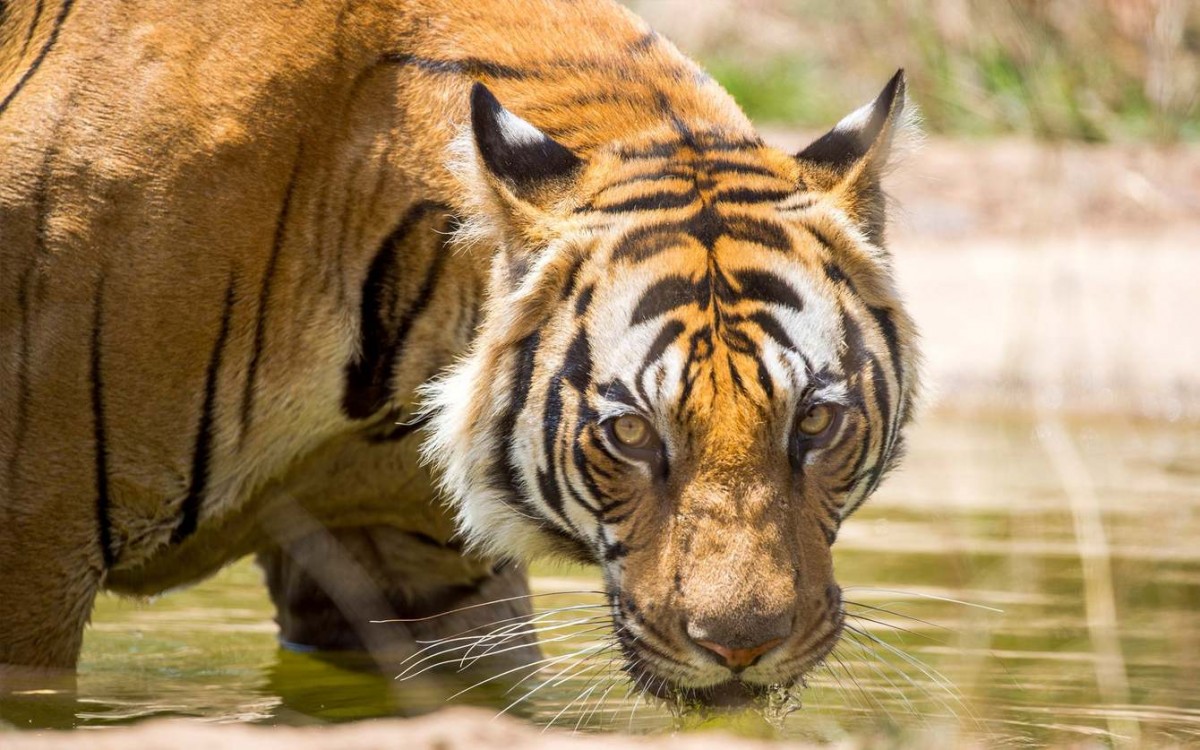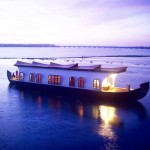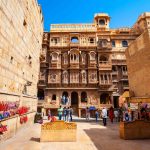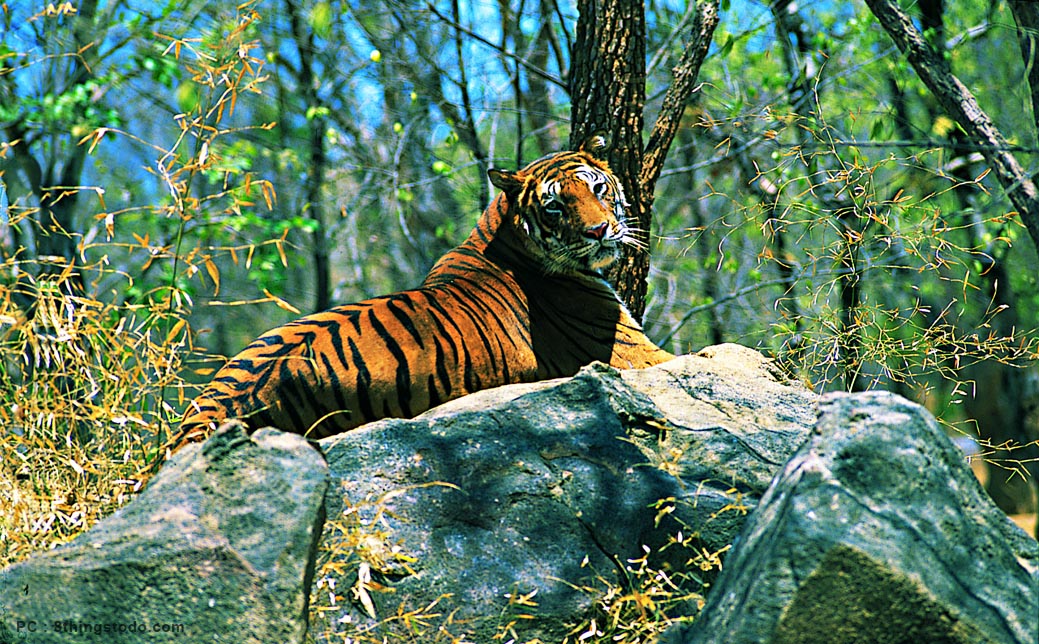
Namdapha National Park
Namdapha National Park at a Glance
Area of the park: 1985.23 square kilometres.
Established : 1972 as a national park, 1983 as a tiger reserve.
Longitude : 96°15’ E to 96°58’ E.
Latitude : 27°23’ N to 27°39’ N.
Altitude : 200 metres to 4571 metres.
Temperature (deg C) : Varies from 37°C to 8°C.
Rainfall : Varies from 1485 mm to 2508 mm.
Languages spoken : Tangsa, Singpho, Assamese, Hindi, English.
Bank of : Brahmaputra River
About Namdapha National Park: Namdapha National Park has perhaps the richest diversity of flora and fauna in the Indian Subcontinent. This is because of its biogeographical location within the Indo-Chinese subregion and its great altitudinal variation, from 4,500 meters at Daphabum, highest point, to 200 meters in the lowest valleys. The park is largely mountainous and is drained by the noa-Dehing, Deban and Namdapha rivers. In the lower levels grow a tangled profusion of tropical rainforests, with huge Hollock, Hollong and Mekai trees intermixed with giant creepers, tall cane and dense bamboo stands. Higher up are the deciduous forests, with temperate and alpine forests higher still, where Oak, Magnolia, Pine,
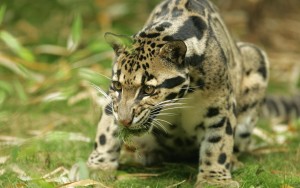
Betula and Rhododendrons grow in profusion. Namdapha is a botanical haven, with over 150 tree species and many flowers and orchids, including the Blue Vanda, one of the rarest orchids. It will be many years before Namdapha’s flora is fully surveyed. Namdapha’s birdlife includes the Satyr Tragopan, Kalij and Monal Pheasants, Giant Hornbill, Forest Eagle Owl and the rare White-winged Wood Duck. principal reptiles include the Indian Python, Reticulated Python and King Cobra. For mammal watchers, the park boasts no fewer than four large cats- Tiger, Leopard, Clouded Leopard and Snow Leopard. It also has a good population of the Hoolock Gibbon.
Season (Namdapha National Park): October to April.
Access (Namdapha National Park): Drive to the park from Dibrugarh (140 km , 5 hours) or Gauhati (full day) airports, with flights from Calcutta and Delhi respectively. The nearest railway station is at Ledo, near Margherita (56 km).
Accommodation and facilities (Namdapha National Park): Government Tourist Lodge, Miao,
Rest House at Namchik.
There are a few basic rest houses in Namdapha, at Haldibari. Until the infrastructure is established, this park is suited only to the most diehard mammal watchers. Movement within the park is restricted, as there are very few trails. The vegetation is dense thus limiting movement and visibility. Safaris are by 4-wheel drive vehicles, riding elephants and on foot.
Note (Namdapha National Park): An inner-line permit is required to visit Arunachal Pradesh, which can be obtained from the Home Ministry in New Delhi 8-12 weeks in advance. Apply as early as possible.
Flora and Fauna in Namdapha National Park: The beautiful forests possess great biodiversity of Flora and Fauna. A details study of its species and genetic variation has not yet been thoroughly done. Namdapha is Botanist’s dream and it may take as long as 50 years to complete a conprehensive survey of its botanical resources. There are more than 150 timber species. The Pinus merkusi and Abies delavavi are not found elsewhere in India. One of the rarest and endangered orchids, the Blue Vanda found here. The most famous local madicinal plant Mishimi Teeta (Copti teeta), which is used by the local tribal for all kinds of diseases is available here but its export has been banned.
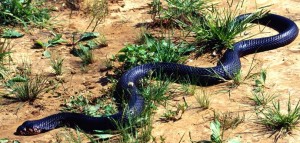
The diverse vegetations and habitats of Namdapha grooms diverse species of animals and birds. It is only park in the World to have the four Feline species of big cat namely the Tiger (Panthera Tigris), Leopard (Panthera Pardus), Snow Leopard (Panthera Uncia) and Clouded Leopard (Neofelis Nebulosa) and numbers of Lesser cats. A number of primate species are seen in the park, such as Assamese macaque, pig-tailed macaque, stump-tailed macaque and number of the distictive Hoolock Gibbons (Hylobates Hoolock), highly endangered and only ‘ape’ species found in India dwells in this impenetrable virgin forest. Of the many other important animals are the elephants, black bear, Indian Bison, several species of deers, reptiles and a variety of arboreal animals.
Tourist Interested Places in Namdapha National Park:
Firmbase: Located on the Noa-Dehing River bank 25 Km from the Deban Forest lodge. This is a popular camping site full of nature’s splendours. The track leading to the idyilic spot is enveloped by luxuriant forest and it is not un common to come across birds and wild animals on the way. For camping at Firmbase, equipments and guide provided by the forest department is an unique experience.
Deban: A beautiful forest camp on the bank of the river Noa-Dihing. It is located within the boundary of Namdapha National Park. One can enjoy the scenic beauty of overlooking Noa-Dihing river. The Forest Inspection Bungalow located at Deban itself surrounded by evergreen forest over looking the river Noa-Dihing is worth-staying. It is also ideal for trekking, hiking and angling on the river Noa-Dihing.
Hornbill: Just 9 Km from Deban, this is as the name suggests is a homing ground for hornbills. Here flocks of these birds can be frequently spotted flying from one grove to another.
Gandhigram: It is situated in the southeast periphery of Namdapha. This is the remotest and the last village in India wedged China and Myanmar and is the home land of Lisu (Yobin) tribe. The village is at a distance of about 120 Km from Deban. A weeklong trek through lush jungles is more enjoyable for those having a craving for adventure.
Camera Point: This camping site, as the name suggests offers a vantage point for a breath-taking view of Namdapha and its lush green landscape.
How to Reach There:
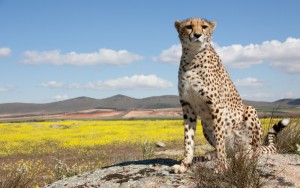
By Air: Nearest Airport: at Mohanbari, Dibrugarh, Assam 182 km from Forest Rest House, Deban, within the Namdapha National Park area
By Rail: Nearest long distance Railway station is Tinsukia Railway Station, Assam, 141 km from Forest Rest House, Deban, within the Namdapha National Park area. Nearest Passenger Railway station is Margherita Railway Station, Assam, 91 km from Forest Rest House, Deban, within the Namdapha National Park area.
By Road: Good motorable road is connected up to Miao which is entry point of Namdapha. The Forest Rest House , Deban, within the Namdapha National Park area is 186 km from Dibrugarh, 141 km from Tinsukia, 91 km from Margherita and 136 km from district headquarter Changlang.


